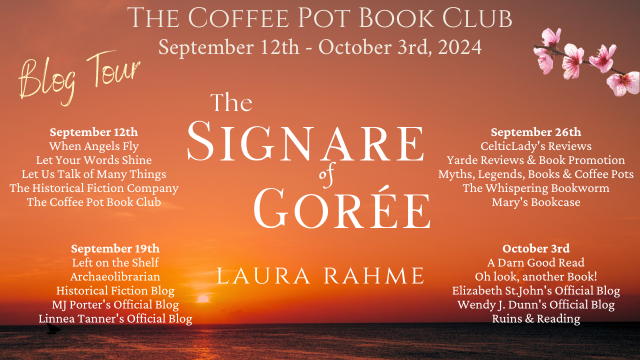
19 Sep Laura Rahme The Signare of Gorée #HistoricalMystery #HistoricalFiction #BlogTour #TheCoffeePotBookClub @cathiedunn
FEATURED AUTHOR: LAURA RAHME
I‘m pleased to welcome Laura Rahme as the featured author in The Coffee Pot Book Club Blog Tour being held between September 12th – October 3rd, 2024. Laura Rahme is the author of the Historical Mystery / Historical Fiction, The Signare of Gorée, independently released by the author on 9th September 2024 (301pages).
Below are highlights of The Signare of Gorée, Laura Rahme’s author bio, and a guest post about the historical research of her book.

Tour Schedule Page: https://thecoffeepotbookclub.blogspot.com/2024/07/blog-tour-the-signare-of-goree-by-laura-rahme.html
HIGHLIGHTS: THE SIGNARE OF GORÉE
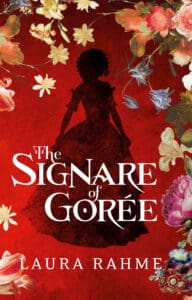 The Signare of Gorée
The Signare of Gorée
By Laura Rahme
Blurb:
1846. In the heat of West Africa, the French navy uncovers the corpses of two French soldiers. Inspector Maurice Leroux arrives at the island of Gorée. It seems death has come to this small colonial outpost off the Senegal coast, home to the prosperous mixed-blood women known as the signares.
The navy suspects that the Bambara people, emboldened by approaching emancipation, may be out for blood. While confronted by the locals’ strange magical beliefs, Maurice remains skeptical. Does malevolence play a part, or are these deaths accidental, brought upon by the brutality of nature in an island known as the white man’s grave?
But when murder strikes, it becomes clear that a killer is stalking Gorée.
Swept by a mystery unlike any he has known, Maurice meets Signare Angélique Aussenac. The proud métis, deserted by her wealthy Bordeaux lover, casts her spell upon Maurice.
But beyond the throbbing sounds of the tam-tams and the glittering signare soirées, danger lurks. Someone is watching. And the deaths go on.
Could the killer be one of the rich Bordeaux merchants? Or are they hiding among the powerful signares?
A historical mystery spanning France and Senegal, THE SIGNARE OF GORÉE explores a world of magic, murder, and passion.
Buy Links:
This title is available to read on #KindleUnlimited.
Universal Buy Link: https://books2read.com/u/4Nl7xz
AUTHOR BIO: LAURA RAHME

Laura Rahme is the author of seven historical novels. Born in Dakar, Senegal where she spent her early childhood, she moved to Australia at the age of ten. A graduate of two Honors degrees in Aerospace Engineering and Psychology, she has worked over two decades as an IT professional. Her greatest joy comes from travel, researching history, and penning historical mysteries. She now lives in France with her screenwriting husband.
Author Links:
Website: https://teranga-and-sun.blogspot.com/
Facebook: https://www.facebook.com/laurarahme.author/
Instagram: https://www.instagram.com/laurarahmegram/
Pinterest: https://www.pinterest.com.au/teranga/
Amazon Author Page: https://www.amazon.com/stores/Laura-Rahme/author/B008P7CF8K
Goodreads: https://www.goodreads.com/author/show/6449755.Laura_Rahme
GUEST POST: HIGHLIGHTS OF MY HISTORICAL RESEARCH
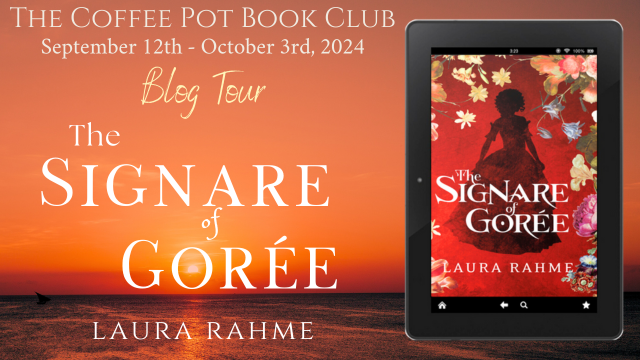
The Signare of Gorée: Highlights of My Historical Research
I doubt I could have gained the confidence to endeavor writing The Signare of Gorée without firsthand experience with the setting. It helped to have been born in Senegal and to have lived my early childhood gaining knowledge about the Senegalese and their culture. There are details about local traditions, values, clothing, food, and religious beliefs that I knew of intrinsically when I set out to write.
Given the novel takes place in 1840s Gorée, a period when the French were in possession of the island, French historical sources like the Annales Maritimes et Coloniales were particularly useful. The French side of my family also offered a wealth of genealogical material. From the 16th to the 19th century, my ancestors include ship captains and marine officers, and their lives contributed to my understanding of the world I was trying to paint. This was the easy part but there was still much work to do!
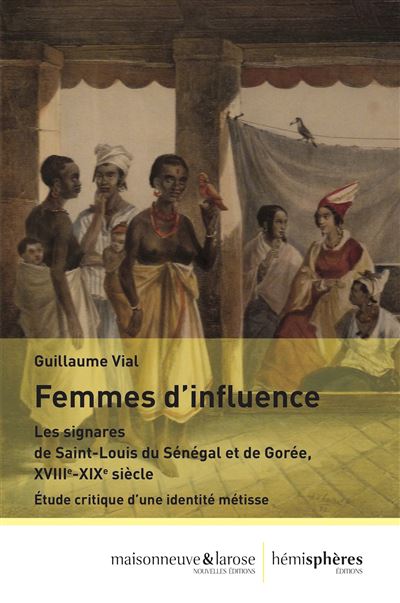 Femmes d’Influence by Guillaume Vial
Femmes d’Influence by Guillaume Vial
Publisher image for educational purposes
To begin, I was keen to discover more about the signares of Senegal and about slave-trading. One source that stood out was Professor Guillaume Vial’s fantastic book, Femmes d’influence : Les signares de Saint-Louis du Sénégal et de Gorée, XVIIIe-XIXe siècle (Women of influence: the signares of Saint-Louis of Senegal and of Gorée, 18th – 19th century). Published in 2019, it traces the history of the signares over the centuries, uncovering their origins, their culture, their commercial activities, their status, and details about their dress and relationships. Another book, and one that will forever haunt me, is Marcus Rediker’s The Slave Ship: A Human History. It draws from various fascinating historical sources, to give a poignant and harrowing depiction of all the actors of the so-called Middle Passage, their activities, and their brutal relationships. I cannot recommend it strongly enough.
Still on the topic of slavery was a book consisting of a collection of 1817-1819 diplomatic letters which included correspondence from Lord Castlereagh. These letters, while formal, convey disgust and a high moral stance as they relate ongoing illegal slave trading activities in Senegal despite the transatlantic trade ban. You can sense the outrage and shock that illegal slave trading activities elicited from that period onward.
To build the world for The Signare of Gorée, I lost myself in dozens of research papers whose subjects ranged from Lebou religious practices, Bambara plant usage, to partitions of property on Gorée. There was a certain eye-opening article on Rouen textile manufacturing that held my interest. It told of Rouen’s determination to produce cheaper fabrics that might be employed to trade for gold, ivory, and other riches from Senegambia. In fact, the locals of the African Coast were lovers of textiles, such that fabrics became a primary trade commodity.
My favorite part of the research was studying 19th century illustrations. These helped me glean a little about life in 19th century Gorée. It is a miracle we have these pictures at all. Some of them were created by François of Orléans, the Prince of Joinville. As a French officer, he traveled through West Africa in the late 1830s and early 1840s. Having the means for a quality education, he was a prolific artist, and his aquarelles are particularly evocative. Incidentally he was the brother of the Duke of Aumale, the prince who restored the Château of Chantilly to its former glory.
Other illustrators whose works helped to picture the signares and or who inspired my novel include, Gustave Boulanger (1824-1888), Stanislas Darondeau (1807-1842), Evremond de Bérard (1824-1881), Jules Gaildrau (1816-1898), Adolphe d’Hastrel (1805-1874), Edouard Auguste Nousveaux (1811-1848), and the métis priest, David Boilat (1814-1901).
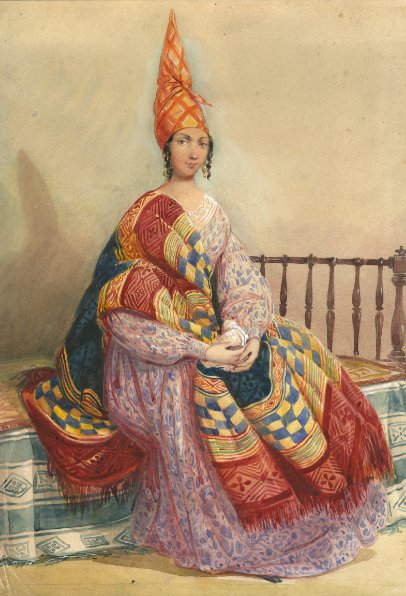
Signare by Stanislas Darondeau
Public domain image
Reading about these men’s biographies, one appreciates how dangerous any expedition to Gorée would have been for an artist in those days. Darondeau could have produced so much more art, but sadly on his return to Brest in Brittany, he died of a fever contracted in Gorée, at the mere age of thirty-four. Succeeding him as the designated illustrator for Senegal expeditions, was Nousveaux but he, too, did not fare well, contracting an illness in 1848 and dying in Saint-Louis. We can at least be grateful to these artful souls for venturing to Gorée and creating illustrations without which we could scarcely imagine the long vanished signares.
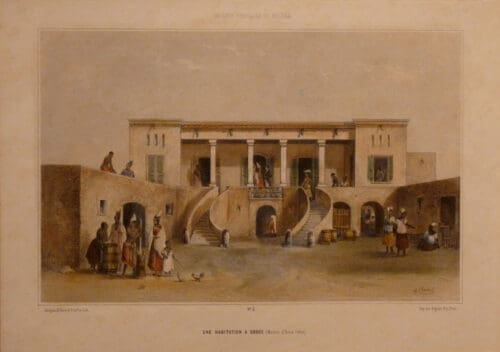
A house in Gorée. (The House of Anna Colas.)
Engraving by Adolphe d’Hastrel, circa 1845
Unmodified and sourced from Ji-Elle, under Creative Commons Attribution
Before concluding, I would like to share one of my favorite illustrations of Gorée. This is Adolphe d’Hastrel’s House of Anna Colas. It is here that my detective lodges during his stay on Gorée. Note that Hastrel labeled it as a villa, not at all as the “House of Slaves” which is the name by which it became known in the 20th century, coinciding with the dawn of tourism in Gorée. I loved this illustration so much I tried to bring it to life in my book, during a scene where Inspector Maurice Leroux awakes from his afternoon nap. I imagined him staying in the right-hand wing, where that man is standing at the balcony. It is a simple but delightful illustration, and I hope I gave it justice.
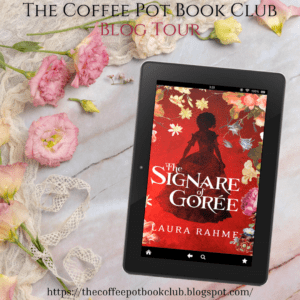
 Twitter: @cathiedunn
Twitter: @cathiedunn
Instagram & Threads: @thecoffeepotbookclub
Bluesky: @cathiedunn.bsky.social


Cathie Dunn
Posted at 04:32h, 19 SeptemberThanks so much for hosting Laura Rahme today, with such an interesting post about her research into the background of her new novel, The Signare of Gorée.
Take care,
Cathie xo
The Coffee Pot Book Club
Linnea Tanner
Posted at 14:12h, 23 SeptemberHi Cathie–It was my pleasure to host Laura Rahme and to feature her interesting post on how she researched the background of her new novel, The Signare of Gorée.
Laura Rahme
Posted at 15:31h, 19 SeptemberThank you so much, Linnea for letting me share my passion and research journey while writing The Signare of Gorée.
I really like you blog layout by the way!
Linnea Tanner
Posted at 14:10h, 23 SeptemberHi Laura,
It was my pleasure to host your blog tour of The Signare of Gorée and share your passion and research journey. Thank you for your lovely feedback on the post. Best wishes on the book and your continued journey as an author.